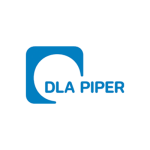The 2025–26 Australian Federal Budget was handed down on Tuesday, March 25 2025. While the Budget primarily focused on cost-of-living relief measures, it also proposed to clarify the managed investment trust (MIT) regime and to increase funding to the Australian Taxation Office (ATO) to ensure tax compliance, with a focus on multinationals and large taxpayers.
Proposed changes to the managed investment trust regime
The MIT withholding regime provides concessional withholding tax rates on distributions from eligible Australian trust vehicles. Under the MIT concessional withholding regime, distributions to foreign investors who are resident in a country that has an exchange of information agreement with Australia are subject to a final withholding tax of:
10% if the MIT is a "clean building MIT"; or
15% for other MITs.
One of the requirements for MIT status is that the trust must satisfy the definition of a "managed investment scheme" under the Corporations Act 2001 (Cth). This definition requires that people contribute money and pool their contributions in a common enterprise to produce financial benefits, but the members do not have day-to-day control over the operation of the scheme. Generally, the view is that a trust must have at least two members to satisfy the “pooling” of contributions requirement.
The ATO has become aware of arrangements involving the restructure of existing trusts or other inward investment structures to inappropriately access the MIT withholding regime (commonly referred to as “captive” MITs). In March 2025, the ATO released a taxpayer alert (TA 2025/1) on this issue.
TA 2025/1 identifies concerns with restructurings that result in a trust that is ultimately owned by a single foreign investor having at least two investors to satisfy the “pooled investment” requirements for a managed investment scheme. The ATO indicated that the general tax anti-avoidance rules under Part IVA of the Income Tax Assessment Act 1936 could apply to MIT restructures that have a single ultimate foreign owner. Furthermore, the ATO noted that any existing “captive” MIT structures could also be subject to ATO scrutiny where there is a material new investment or ownership change.
Shortly after the release of TA 2025/1, the assistant treasurer issued a clarifying response stating that the MIT rules will be amended to ensure that “legitimate investors can continue to access concessional withholding tax rates in Australia while strengthening guidelines to prevent misuse” and that “genuine, foreign based widely-held investors, such as pension funds” will still be able to access the MIT concessional withholding tax rates.
Further to this announcement, it was confirmed in the Budget that laws will be enacted to “clarify” the uncertainty surrounding the availability of the MIT concessions for certain MIT structures and these amendments will apply retrospectively to fund payments from March 13 2025. While the draft legislation for these measures has not yet been released, it is hoped that the government will provide certainty and comfort to legitimate structures involving widely held foreign entities.
Any existing or proposed MIT structures that are ultimately owned by a single foreign investor should monitor the progress of these changes and ATO activity in this area to determine whether the MIT eligibility of their structures could be at risk.
For completeness, the government also announced the deferral of the clean building MIT concessions (of 10%) to data centres and warehouses from July 1 2025 to the first January 1, April 1, July 1, or October 1 after the relevant act receives royal assent. These concessions were first announced in the 2023–24 Federal Budget. No draft legislation has yet been issued for these amendments.
Deferred start date for foreign resident CGT measures
The Australian government has deferred the start date of the proposed foreign resident capital gains tax (CGT) measure, referred to as the “Strengthening the foreign resident capital gains tax regime”, from July 1 2025 to the first January 1, April 1, July 1, or October 1 after the relevant act receives royal assent.
The proposed measures were initially announced in the 2024–25 Budget and were subject to a consultation process in July and August 2024, but no draft legislation has since been issued. The proposed measures included:
Clarifying and broadening the types of assets on which foreign residents are subject to CGT to include assets that have a “close economic connection” to Australian land;
Amending the principal asset test to include a 365-day testing period, rather than the existing point-in-time test, which applies at the time of disposal; and
Requiring foreign residents disposing of shares and other membership interests exceeding A$20 million in value to notify the ATO, prior to the transaction being executed.
Increased funding for ATO compliance activities
The Budget announced that the Australian government will provide A$999 million of additional funding over the next four years to the ATO to extend and expand tax compliance activities, with a key focus on multinationals and other large taxpayers. These Australian taxpayers should review the current tax compliance requirements and be prepared for potential ATO review and audit activity.
Previously announced but unenacted measures
While the Budget provided an update on certain previously announced but unenacted measures, it did not provide further details regarding the previously announced reforms relating to:
Corporate and individual tax residency;
Penalty regimes relating to the mischaracterisation of royalites, interest, or dividends; and
The expansion of Australia’s general anti-avoidance rules.












